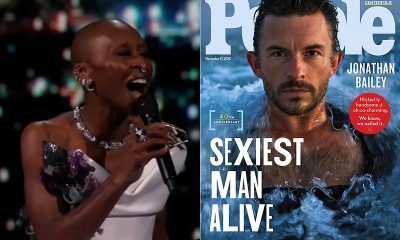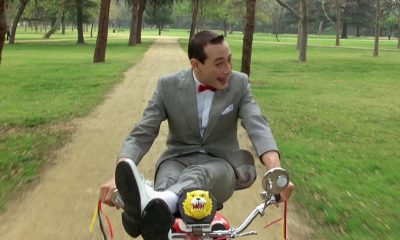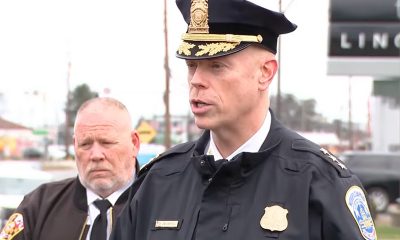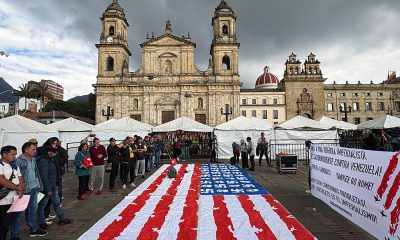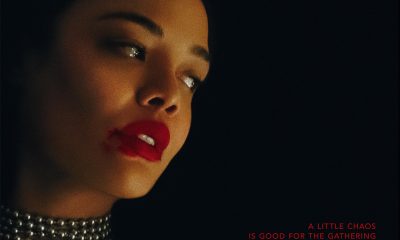a&e features
Remembering those we lost in 2023
World’s oldest drag performer, PR guru to the stars among those who died
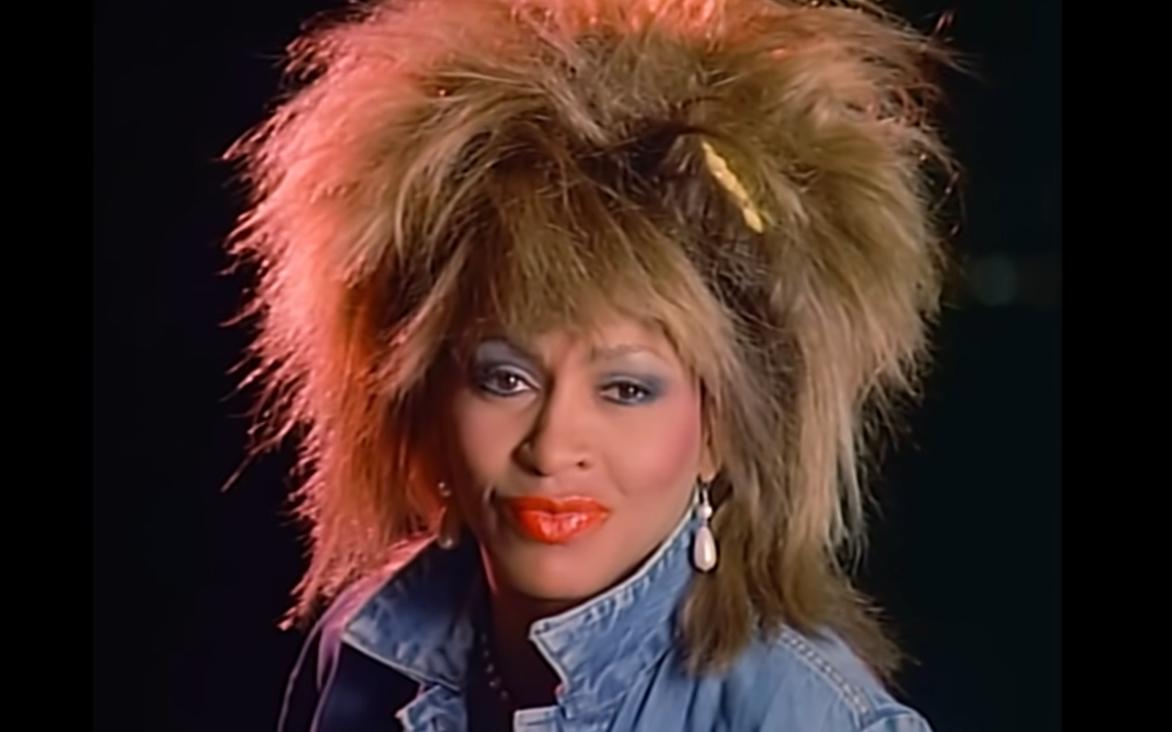
The many acclaimed LGBTQ people and allies who died in 2023 include:
Frank Galati, an internationally acclaimed writer, director, and actor, known for directing “Ragtime” on Broadway and his Chicago theater work, which included his adaptation of “The Grapes of Wrath,” died on Jan. 2 in Sarasota, Fla. at 79 from complications of cancer.
Lily Chavez, a beloved D.C. nightlife figure, died on Jan. 8 at age 35 from complications of Lupus. Chavez was the box office cashier at D.C.’s Town Danceboutique, a bartender at Annie’s and Level 1 restaurants and the gay bar Cobalt, the Blade reported.
Sal Piro, a fan of “The Rocky Horror Picture Show,” who saw the camp classic some 1,300 times and founded “The Rocky Horror Picture Show” fan club, died at 72 on Jan. 22 at his Manhattan home from an aneurysm in his esophagus.
Everett Quinton, an actor, director, and leader of the Ridiculous Theatrical Company after his partner Charles Ludlam’s death in 1987, died on Jan. 23 in Brooklyn, Ny. at 71 from glioblastoma, a fast-moving cancer.
Albert Russell, an acclaimed organist and music director from 1966 to 1984 of St. John’s Episcopal Church on Lafayette Square in D.C. (often called the “Church of the Presidents”), died at 91 from complications of a fall on Jan. 23 at his Washington home.
Dr. Charles Silverstein, a psychologist, whose presentation as a graduate student helped to persuade the American Psychiatric Association to stop pathologizing being queer, died on Jan. 30 at age 87 at his Manhattan home from lung cancer. He founded the Institute for Human Identity, which provides mental health service to LGBTQ clients.
Shinta Ratri, an Indonesian transgender activist, who founded an Islamic boarding school that provides a safe space for trans women, died on Feb. 1 at 60 from a heart attack in Yogyakarta, a city on the Indonesian island of Java.
Adrian Hall, the founding artistic director of the Trinity Repertory Company in Providence, R.I., who revitalized regional theater in Dallas and other cities, died at 95 on Feb. 4 in a hospital in Tyler, Texas.
Donald Spoto, a biographer whose more than two-dozen subjects included Joan of Arc, Jesus, Alfred Hitchcock and Grace Kelly, died at 81 on Feb. 11 in Koege, Denmark from a brain hemorrhage.
Howard Bragman, a publicist who advised celebrities involved in scandals and queer clients who were coming out, died at 66 on Feb. 11 from leukemia in Los Angeles.
John E. Woods, an award-winning translator of Thomas Mann, died on Feb. 15 in Berlin at 80 from a lung ailment and skin cancer.
Royston Ellis, a British Beat poet whose spoken word performances accompanied the Beatles, Jimmy Page and other performers before they became rock stars, died on Feb. 26 at 82 from heart failure in Induruwa, Sri Lanka.
Georgina Beyer, believed to be the first transgender member of Parliament in New Zealand, died on March 6 at 65 in a Wellington, New Zealand hospice.
Ian Falconer, whose popular children’s books featuring Olivia, an endearing, charming pig, delighted kids and adults, died on March 7 at 63 in Norwalk, Conn., from kidney failure.
Julie Anne Peters, author of “Luna,” whose books were widely banned, died on March 21 at 71 at her Wheat Ridge, Colo. home. “Luna,” released in 2004, is believed to be the first young-adult novel with a transgender character to come out from a mainstream publisher.
Walter Cole, the world’s oldest drag performer known as Darcelle XV died March 23 at 92 at a Portland, Ore. hospital.
James Bowman, a British countertenor known for his performance as Oberon in Benjamin Britten’s opera “A Midsummer Night’s Dream” and Apollo in Britten’s opera “Death in Venice,” died at 81 on March 27 at his home in Redhill, south of London.
Raghavan Iyer, an American-born chef and author who introduced Americans to Indian cuisine, died on March 31 at 61 in San Francisco from pneumonia complicated by colorectal cancer that had metastasized to his lungs and brain.
Rachel Pollack, a transgender activist and authority on tarot, who created the first trans DC Comics superheroine, died at 77 on April 7 from non-Hodgkin’s lymphoma in Rhinebeck, N.Y.
Gail Christian, a trailblazing, acclaimed Black NBC News and PBS correspondent, died on April 12 at 83 in Los Angeles from complications of intestinal surgery.
Helen Thorington, a trailblazer in radio and internet art, died at 94 on April 13 from complications of Alzheimer’s disease in Lincoln, Mass.
Koko Da Doll, 35, a Black transgender woman, who was featured in “Kokomo City,” an award-winning documentary about four Black transgender sex workers, was killed in Atlanta on April 18.
Barry Humphries, the Australian-born actor and comic, who created the divine and beloved Dame Edna, died on April 22 in Sydney at 89 several days after having hip surgery.
Robert Patrick, a playwright whose 1964 play “The Haunted Host,” The New York Times has called “a touchstone of early gay theater,” died at 85 on April 23 from atherosclerotic cardiovascular disease at his Los Angeles home.
Harry Belafonte, a barrier-breaking singer, actor, civil rights activist and LGBTQ ally, known as the “King of Calypso,” died on April 25 at 96 from congestive heart failure at his Manhattan home.
David Miranda, an ally of Edward J. Snowden and an advocate for LGBTQ rights in Brazil’s Congress, who was born in the slums of Rio de Janeiro, died at 37 on May 9. He died in a Rio de Janeiro hospital intensive care unit after battling an abdominal infection for nine months.
Renowned queer, avant-garde artist Kenneth Anger, known for his surreal films, died at 96 on May 11 in a care facility in Yucca Valley, Calif. Anger wrote two “Hollywood Babylon” books, which were filled with gossip. These works were thought to be based on rumors, not facts.
Helmut Berger, an Austrian actor who was known for his work in films directed by the acclaimed filmmaker Luchino Visconti, died at 78 on May 18 at his Salzburg home.
Tina Turner, the legendary singer, who performed at the first Gay Games in 1982, died on May 24 at 83 at her home in Kusnacht, Switzerland after a long illness.
George Maharis, an actor who was a star in the iconic TV show “Route 66,” died at 94 on May 24 at his Beverly Hills, Calif. home.
Jon Haggins, a fashion designer, who was acclaimed for, what The New York Times called his “sinuous, sensuous” 1960s and early 70s designs, died on June 15 at 79 at his Queens, N.Y. home.
The drummer for the Texas acid-punk band Butthole Surfers, Teresa Taylor, died at 60 on June 18 from lung cancer. She was beloved by Gen-Xers for her appearance in the 1990 movie “Slacker.”
Robert Black, an acclaimed bassist and a founding member of the renowned Bang on a Can All-Stars ensemble, died at 67 on June 22 from colon cancer at his Hartford, Conn. home.
David Richards, a theater critic, who was a Pulitzer Prize finalist for his work for the The Washington Post, and, briefly, chief drama critic for The New York Times, died at 82 on June 24 in a Warrenton, Va. hospital. The cause of death was complications from Parkinson’s disease.
Michele Judith Ballotta, a.k.a. Mickie, a beloved advocate for the fight against breast cancer and other causes, died on June 24 at age 67 in Seaford, Md.
Lilli Vincenz, a groundbreaking LGBTQ rights activist, psychotherapist and documentary filmmaker, died at 85 on June 27 of natural causes at her residence at an Oakton, Va. assisted living center.
Dr. Susan Love, a surgeon, public health advocate, author, researcher and founder of the National Breast Cancer Coalition, died at 75 on July 2 from a recurrence of leukemia at her Los Angeles home. At the time of her death, she was chief visionary office of the Dr. Susan Love Foundation.
Minnie Bruce Pratt, an acclaimed lesbian poet, essayist and LGBTQ activist, died at 76 from an aggressive brain tumor on July 2 at a hospice in Syracuse, N.Y.
Cheri Pies, author of the landmark 1985 book “Considering Parenthood: A Workbook for Lesbians,” died at 73 from cancer on July 4 at her Berkeley, Calif. home.
The Rev. A. Stephen Pieters, a gay minister, who had AIDS and spoke about being gay and having the disease to church congregations in the 1980s when homophobia was the norm, died at 70 on July 8 from a sepsis infection at a Glendale, Calif. hospital. His memoir “Love Is Greater Than AIDS: A Memoir of Survival, Healing, and Hope” will be released in 2024.
Amos Badertscher, a photographer whose empathetic portraits of hustlers, sex workers and drag queens in Baltimore are in institutions devoted to queer art from the Leslie-Loman Museum of Art in New York to the ONE Archives in Los Angeles, died on July 24. He died in Baltimore at age 86 from complications from a fall.
Sinead O’Connor, the pop singer, who was acclaimed, but reviled for denouncing pedophilia in the Catholic Church, and, in 1992, tearing up a photo of Pope John Paul II on “Saturday Night Live,” died at 56 on July 26.
James “Hawk” Crutchfield, a U.S. Air Force veteran and U.S. Federal Communications Commission career program analyst, died at 77 of natural causes in his D.C. home on July 29. For more than four decades, Crutchfield was “devoted” to volunteer leadership to at least eight D.C.-area LGBTQ D.C. organizations, the Blade reported.
Paul Reubens, the actor and comedian who created and portrayed the iconic and beloved character Pee-Wee Herman, died at 70 on July 30 from cancer in a Los Angeles hospital.
Jess Search, a gender nonconforming producer of documentaries focusing on marginalized groups, died at 54 on July 31 in a London hospital from brain cancer. Search helped to start-up the Doc Society, a group that supports documentarians.
Carmen Xtravaganza, a ballroom legend and transgender activist, who was featured in the documentary “Paris Is Burning,” died at 62 on Aug. 4. Before her death, she had been struggling with stage 4 lung cancer.
Sarah Wunsch, a civil liberties lawyer known for her work on race, gender ,and free speech issues, died at 75 on Aug. 17 at her Brookline, Mass. home from complications of a stroke.
Janne Marie Harrelson, who had a 32-year career at Gallaudet University, died at 70 on Aug. 23 from Ovarian cancer while in hospice care in Rockville, Md. She held multiple leadership positions at Gallaudet, including director, National Mission Planning and director, Gallaudet University Regional Centers.
Michael Leva, an acclaimed 1980s fashion designer, who was on the cover of the (now defunct) weekly “7 Days” for its “Designers on the Verge” feature, and later a prominent fashion executive, died at 62 on Sept. 14 in Providence, R.I. from heart failure.
Erwin Olaf, a Dutch photographer acclaimed for his portraits of counterculture celebs and Dutch royalty died at 64 on Sept. 20 in Groningen, the Netherlands from complications of a lung transplant.
John F. Benton, 72, who worked in management at the Smithsonian Institution’s National Air and Space Museum and other government agencies for more than four decades, died on Sept 20 after a short illness at the Virginia Hospital Center in Arlington the Blade reported.
Pat Arrowsmith, 93, a British author, anti-war activist and Campaign for Nuclear Disarmament co-founder, who worked with Amnesty International, died on Sept. 27 at her North London home.
Rudy Perez, a choreographer and postmodern dance pioneer died at 93 on Sept. 29 from complications of asthma at his Los Angeles home.
Beverly Willis, a trailblazing, acclaimed architect, who advocated for omen striving to break through in the profession, died at 95 on Oct. 1 from complications of Parkinson’s disease at her Branford, Conn., home.
James Jorden, a writer and creator of the high culture, yet punk opera zine-turned-website Parterre Box, died at 69 on Oct. 2. He was found dead at his Sunnyside, Queens home, The New York Times reported.
Terence Davies, 77, a British director whose acclaimed films included “The House of Mirth,” “A Quiet Passion” and “Benediction,” died on Oct. 7, after what his manager said was “a short illness,” at his home in Mistley, Essex in England.
Margot Polivy, a lawyer, champion of women in college sports and a tireless advocate for Title IX, died at 85 on Oct. 7 at her Washington home.
Steven Lutvak, 64, a composer and lyricist whose show “A Gentleman’s Guide to Love & Murder” won the Tony Award for best musical, died on Oct. 9 from a pulmonary embolism at his Manhattan work studio.
Eva Kollisch, 98, in her teens, fled Nazi-occupied Austria. Kollisch, who grew up to be a prominent lesbian rights advocate, feminist studies scholar and memoirist, died from a chest infection on Oct. 10 at her Manhattan home.
Jack Anderson, a dance critic for The New York Times for five decades, died at 88 in a New York City hospital from sepsis on Oct. 20.
Amber Hollibaugh, 77, an activist, organizer, author of “My Dangerous Desires: A Queer Girl Dreaming Her Way Home” and self-educated public intellectual in the LGBTQ+, feminist, sexual liberation and economic justice movements, died from complications of diabetes on Oct. 20, the Blade reported.
David Del Tredici, a Pulitzer Prize-winning composer, acclaimed for his pieces that set parts of “Alice in Wonderland” to music, died at 86 from Parkinson’s disease on Nov. 18 at his Greenwich Village home.
Carlton D. Pearson, a pastor who was cast aside by his evangelical megachurch after he said he didn’t believe in hell and began advocating for LGBTQ+ rights, died at 70 on Nov. 19 from cancer in a Tulsa, Okla. hospice. Pearson, whose life story was told in a Netflix movie, moved on from his evangelical church to become a minister with the United Church of Christ, a liberal Christian denomination.
Brandon “RBC” Gordon, 41, a Greenbelt City Council member, who started the Greenbelt Pride festival in 2022, died on Nov. 26. Gordon, who worked to make the community more inclusive, identified as a “transamorous heterosexual man,” The Washington Post, reported.
LGBTQ ally Norman Lear, the TV writer and producer whose TV shows, from “All in the Family” to “Maude,” transformed the culture, died at 101 on Dec. 5 at his Los Angeles home.
a&e features
Queer highlights of the 2026 Critics Choice Awards: Aunt Gladys, that ‘Heated Rivalry’ shoutout and more
Amy Madigan’s win in the supporting actress category puts her in serious contention to win the Oscar for ‘Weapons’

From Chelsea Handler shouting out Heated Rivalry in her opening monologue to Amy Madigan proving that horror performances can (and should) be taken seriously, the Critics Choice Awards provided plenty of iconic moments for queer movie fans to celebrate on the long road to Oscar night.
Handler kicked off the ceremony by recapping the biggest moments in pop culture last year, from Wicked: For Good to Sinners. She also made room to joke about the surprise hit TV sensation on everyone’s minds: “Shoutout to Heated Rivalry. Everyone loves it! Gay men love it, women love it, straight men who say they aren’t gay but work out at Equinox love it!”
The back-to-back wins for Jacob Elordi in Frankenstein and Amy Madigan in Weapons are notable, given the horror bias that awards voters typically have. Aunt Gladys instantly became a pop culture phenomenon within the LGBTQ+ community when Zach Cregger’s hit horror comedy released in August, but the thought that Madigan could be a serious awards contender for such a fun, out-there performance seemed improbable to most months ago. Now, considering the sheer amount of critics’ attention she’s received over the past month, there’s no denying she’s in the running for the Oscar.
“I really wasn’t expecting all of this because I thought people would like the movie, and I thought people would dig Gladys, but you love Gladys! I mean, it’s crazy,” Madigan said during her acceptance speech. “I get [sent] makeup tutorials and paintings. I even got one weird thing about how she’s a sex icon also, which I didn’t go too deep into that one.”
Over on the TV side, Rhea Seehorn won in the incredibly competitive best actress in a drama series category for her acclaimed performance as Carol in Pluribus, beating out the likes of Emmy winner Britt Lower for Severance, Carrie Coon for The White Lotus, and Bella Ramsey for The Last of Us. Pluribus, which was created by Breaking Bad’s showrunner Vince Gilligan, has been celebrated by audiences for its rich exploration of queer trauma and conversion therapy.
Jean Smart was Hack’s only win of the night, as Hannah Einbinder couldn’t repeat her Emmy victory in the supporting actress in a comedy series category against Janelle James, who nabbed a trophy for Abbott Elementary. Hacks lost the best comedy series award to The Studio, as it did at the Emmys in September. And in the limited series category, Erin Doherty repeated her Emmy success in supporting actress, joining in yet another Adolescence awards sweep.
As Oscar fans speculate on what these Critics Choice wins mean for future ceremonies, we have next week’s Golden Globes ceremony to look forward to on Jan. 11.
a&e features
Looking back at the 10 biggest A&E stories of 2025
‘Wicked,’ Lady Gaga’s new era, ‘Sexy’ Bailey and more

Although 2025 was a year marked by countless attacks on trans rights and political setbacks, the year also saw brilliant queer artists continuing to create art. From Cannes and Sundance Award winners now vying for Oscar consideration to pop icons entering new stages of their careers, queer people persevered to tell their stories through different media.
With the state of the world so uncertain, perhaps there’s no more vital time to celebrate our wins, as seen through some of this year’s top pop culture moments. While there’s no collection of 10 stories that fully encompass “the most important” news, here are some events that got the gays going:
10. ‘Mysterious Gaze of the Flamingo’ wins big at Cannes

The Cannes Film Festival has become a crucial start for films hoping to make their way to the Oscars, and first-time director Diego Céspedes won the top Un Certain Regard prize for his intimate western “The Mysterious Gaze of the Flamingo.” The film is set in the ‘80s and is intended as an allegory for the AIDS epidemic. Seeing a film that unpacks vital queer history win one of the most coveted awards at Cannes has been a huge point of pride in the independent filmmaking community.
Since the film bowed at Cannes, it has been selected as Chile’s Oscar entry in the Best International Feature race. Speaking with The Blade during the film’s AFI Fest run in October, Céspedes said: At first, I was kind of scared to have this campaign position in the times that we’re living [in] here. But at the same time, I think the Oscars mean a huge platform — a huge platform for art and politics.”
9. ‘The Last of Us’ returns for an even gayer season 2
While the first season of The Last of Us gave us one of TV’s most heartbreaking queer love stories in the episode “Long, Long Time,” Season 2 doubled down on its commitment to queer storytelling with the blossoming relationship between Ellie (Bella Ramsey) and Dina (Isabela Merced). The show expanded on the pair’s relationship in the original video game, making it perhaps the central dynamic to the entire season. That unfortunately came with more homophobic backlash on the internet, but those who checked out all the episodes saw a tender relationship form amid the show’s post-apocalyptic, often violent backdrop. For their performance, Ramsey was once again nominated for an Emmy, but Merced deserved just as much awards attention.
8. ‘Emilia Pérez’ sparks controversy
Jacques Audiard’s genre-bending trans musical “Emilia Pérez” proved to be an awards season juggernaut this time last year, winning the Golden Globe for Best Musical/Comedy. But when the lead star Karla Sofia Gascón’s racist, sexist, and homophobic old tweets resurfaced, the film’s Oscar campaign became a tough sell, especially after Netflix had tried so hard to sell Emilia Pérez as the “progressive” film to vote for. Mind you, the film had already received significant backlash from LGBTQ+ audiences and the Mexican community for its stereotypical and reductive portrayals, but the Gascón controversy made what was originally just social media backlash impossible to ignore. The only person who seemed to come out of the whole debacle unscathed was Zoe Saldaña, who won the Oscar for Best Supporting Actress over Ariana Grande.
7. ‘Sorry, Baby’ establishes Eva Victor as major talent
Back in January at the Sundance Film Festival, Eva Victor (known by many for her brand of sketch comedy) premiered their directorial debut “Sorry, Baby” to rave reviews, even winning the Waldo Salt Screening Award. Victor shadowed Jane Schoenbrun on the set of “I Saw the TV Glow,” and seeing Victor come into their own and establish such a strong voice immediately made them one of independent cinema’s most exciting new voices. A memorable scene in the film sees the main character, Agnes (played by Victor), struggling to check a box for male or female, just one example of how naturally queerness is woven into the fabric of the story.
Most recently, Victor was nominated for a Golden Globe for her performance in the film, and she’s represented in a category alongside Jennifer Lawrence (“Die My Love”), Jessie Buckley (“Hamnet”), Julia Roberts (“After the Hunt”), Renate Reinsve (“Sentimental Value”) and Tessa Thompson (“Hedda”). The film also received four Independent Spirit Award nominations overall.
6. Paul Reubens comes out in posthumous doc

While Paul Reubens never publicly came out as gay before passing away in 2023, the two-part documentary “Pee-wee as Himself” premiered back in May on HBO Max, giving the legendary comedian a chance to posthumously open up to the world. Directed by Matt Wolf, the documentary explores how Reubens found his alter ego Pee-Wee Herman and why he kept his private life private.
The documentary won an Emmy in the Outstanding Documentary or Nonfiction Special category and remains one of the most critically acclaimed titles of the year with a 100% Rotten Tomatoes score. Also worth noting, the National Geographic documentary Sally told the posthumous coming out story of Sally Ride through the help of her long-time partner, Tam O’Shaughnessy.
5. Lady Gaga releases ‘Mayhem’
Lady Gaga entered a new phase of her musical career with the release of Mayhem, her seventh album to date. From the frenzy-inducing pop hit Abracadabra to the memorable Bruno Mars duet featured on “Die With a Smile,” seeing Gaga return to her roots and make an album for the most die-hard of fans was especially rewarding after the underwhelming film releases of “House of Gucci” and “Joker: Folie à Deux.” Gaga has been touring with The Mayhem Ball since July, her first arena tour since 2018. She even extended her tour into 2026 with more North American dates, so the party isn’t stopping anytime soon. And Gaga is even set to make an appearance next May in “The Devil Wears Prada 2.”
4. Cynthia Erivo, Ariana Grande perform at the Oscars

While “Wicked: For Good” didn’t quite reach the heights of the first film, we will forever have Cynthia Erivo and Ariana Grande’s breathtaking live performance that opened the 97th Academy Awards. The pair sang a rendition of “Over the Rainbow,” “Home,” and “Defying Gravity,” paying proper homage to the original 1939 “Wizard of Oz.” Even non-Wicked fans can’t deny how magical and brilliantly staged this performance was. With both Erivo and Grande up for acting Oscars last year, they’re hoping to repeat success and make history with consecutive nominations. Either way, let’s hope there’s another live performance in the making, especially with two new original songs (The Girl in the Bubble and No Place Like Home) in the mix.
3. Indya Moore speaks out against Ryan Murphy
Indya Moore has consistently used social media as a platform for activism, and in September, posted a 30-minute Instagram live speaking out against “Pose” co-creator Ryan Murphy. Moore claimed that Murphy wasn’t being a true activist for trans people. “Ryan Murphy, we need you to do more. You need to address the racism, the violence, and the targeting of people on your productions, Ryan Murphy. You do need to make sure trans people are paid equally. Yes, Janet did the right thing,” Moore said. Murphy was also back in the headlines this year for the critically panned “All’s Fair” and the controversial “Monster: The Ed Gein Story” starring Laurie Metcalf and Charlie Hunnam.
2. Cole Escola wins Tony for Best Leading Actor
Few pop culture moments this year brought us together more than Cole Escola winning a Tony award for “Oh, Mary!” the Broadway show they created, wrote and starred in (we love a triple threat!) Escola made history by becoming the first nonbinary person to win a Tony in the leading actor category, and seeing them excitedly rush to the stage wearing a Bernadette Peters-inspired gown instantly became a viral social media moment.
The cherry on top of Escola’s major moment is the recent news that they are writing a Miss Piggy movie with Jennifer Lawrence and Emma Stone producing — news that also broke the internet for the better. We cannot wait!
1. Jonathan Bailey makes gay history as ‘Sexiest Man Alive’

The same year as his on-screen roles in blockbusters “Jurassic World Rebirth” and “Wicked: For Good,” Jonathan Bailey made history as the first openly gay man to be named People magazine’s “Sexiest Man Alive.” The fact that it took 40 years for an openly gay man to earn the title is a signifier of how far we still have to go with queer representation, and seeing Bailey celebrated is just one small step in the right direction.
“There’s so many people that want to do brilliant stuff who feel like they can’t,” he told PEOPLE, “and I know the LGBT sector is under immense threat at the moment. So it’s been amazing to meet people who have the expertise and see potential that I could have only dreamed of.” In 2024, Bailey founded the charity titled The Shameless Fund, which raises money for LGBTQ+ organizations.
a&e features
Your guide to D.C.’s queer New Year’s Eve parties
Ring in 2026 with drag, leather, Champagne, and more
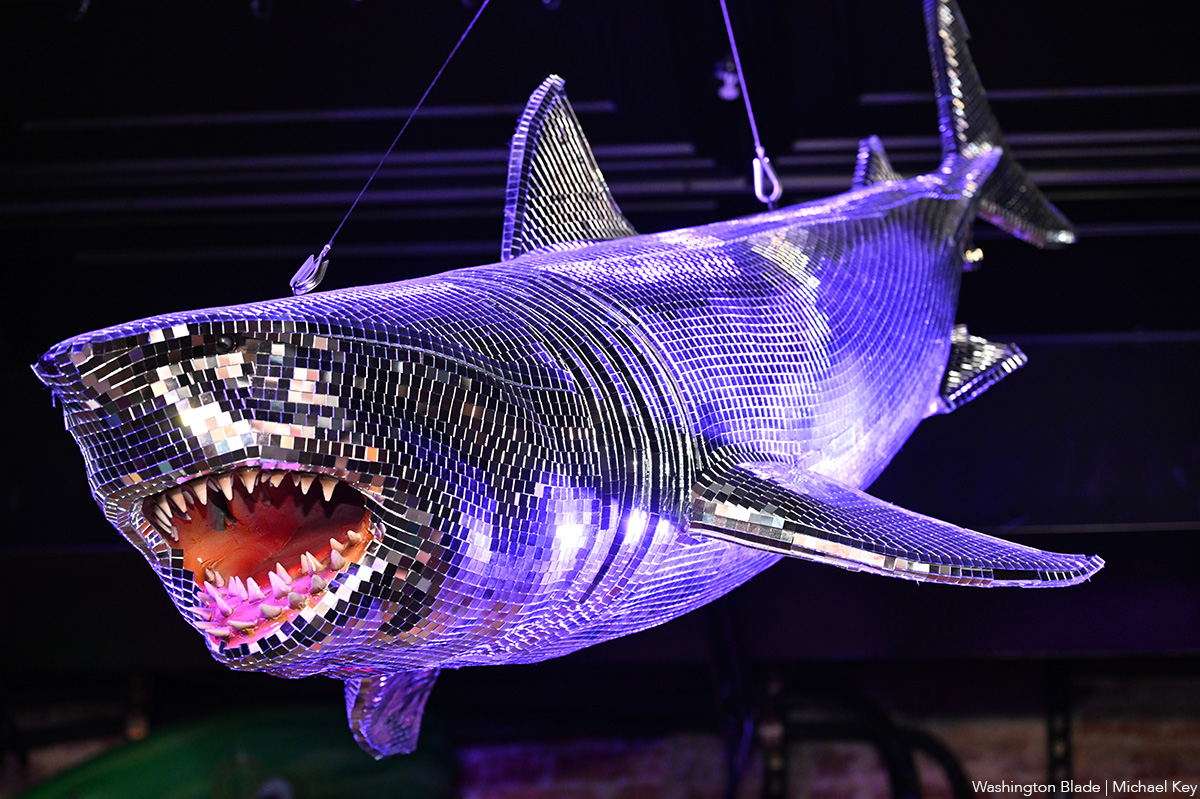
With Christmas in the rear view mirror, we can turn our attention to ringing in a much-anticipated New Year with a slew of local LGBTQ parties. Here’s what’s on tap.
Pitchers
This spacious Adams Morgan bar is hosting the “Pitchers’ Perfect New Year’s Eve.” There will be a midnight Champagne toast, the ball drop on the big screens, and no cover, all night long. The bar doesn’t close until 4 a.m., and the kitchen will be open late (though not until close). All five floors will be open for the party, and party favors are promised.
Trade
D.C.’s hottest bar/club combo is leaning into the Shark motif with its NYE party, “Feeding Frenzy.” The party is a “glitterati-infused Naughty-cal New Year’s Even in the Shark Tank, where the boats are churning and the sharks are circling.” Trade also boasts no cover charge, with doors opening at 5 p.m. and the aforementioned Shark Tank opening at 9 p.m.. Four DJs will be spread across the two spaces; midnight hostess is played by Vagenesis and the two sea sirens sensuously calling are Anathema and Justin Williams.
Number Nine
While Trade will have two DJs as part of one party, Number Nine will host two separate parties, one on each floor. The first floor is classic Number Nine, a more casual-style event with the countdown on TVs and a Champagne midnight toast. There will be no cover and doors open at 5 p.m. Upstairs will be hosted by Capital Sapphics for its second annual NYE gathering. Tickets (about $50) include a midnight Champagne toast, curated drink menu, sapphic DJ set by Rijak, and tarot readings by Yooji.
Crush
Crush will kick off NYE with a free drag bingo at 8 p.m. for the early birds. Post-bingo, there will be a cover for the rest of the evening, featuring two DJs. The cover ($20 limited pre-sale that includes line skip until 11 p.m.; $25 at the door after 9 p.m.) includes one free N/A or Crush, a Champagne toast, and party favors (“the legal kind”). More details on Eventbrite.
Bunker
This subterranean lair is hosting a NYE party entitled “Frosted & Fur: Aspen After Dark New Year’s Eve Celebration.” Arriety from Rupaul Season 15 is set to host, with International DJ Alex Lo. Doors open at 9 p.m. and close at 3 p.m.; there is a midnight Champagne toast. Cover is $25, plus an optional $99 all-you-can-drink package.
District Eagle
This leather-focused bar is hosting “Bulge” for its NYE party. Each District Eagle floor will have its own music and vibe. Doors run from 7 p.m.-3 a.m. and cover is $15. There will be a Champagne toast at midnight, as well as drink specials during the event.
Kiki, Shakiki
Kiki and its new sister bar program Shakiki (in the old Shakers space) will have the same type of party on New Year’s Eve. Both bars open their doors at 5 p.m. and stay open until closing time. Both will offer a Champagne toast at midnight. At Kiki, DJ Vodkatrina will play; at Shakiki, it’ll be DJ Alex Love. Kiki keeps the party going on New Year’s Day, opening at 2 p.m., to celebrate Kiki’s fourth anniversary. There will be a drag show at 6 p.m. and an early 2000s dance party 4-8 p.m.
Spark
This bar and its new menu of alcoholic and twin N/A drinks will host a NYE party with music by DJ Emerald Fox. Given this menu, there will be a complimentary toast at midnight, guests can choose either sparkling wine with or without alcohol. No cover, but Spark is also offering optional wristbands at the door for $35 open bar 11 p.m.-1 a.m. (mid-shelf liquor & all NA drinks).
-

 District of Columbia5 days ago
District of Columbia5 days agoKennedy Center renaming triggers backlash
-

 District of Columbia5 days ago
District of Columbia5 days agoNew interim D.C. police chief played lead role in security for WorldPride
-

 Colombia5 days ago
Colombia5 days agoColombians protest against Trump after he threatened country’s president
-

 Movies4 days ago
Movies4 days ago‘Hedda’ brings queer visibility to Golden Globes

